2020 has certainly brought with it an avalanche of changes for communities to manage – the most prominent of which focuses on community health and fitness. During the last several months, fitness and wellness options can be considered a necessary remedy to 2020’s heightened stress levels and a vital sanctuary from ever-changing activity restrictions — with so many gyms and rec centers swinging between closed and open with extremely limited access.
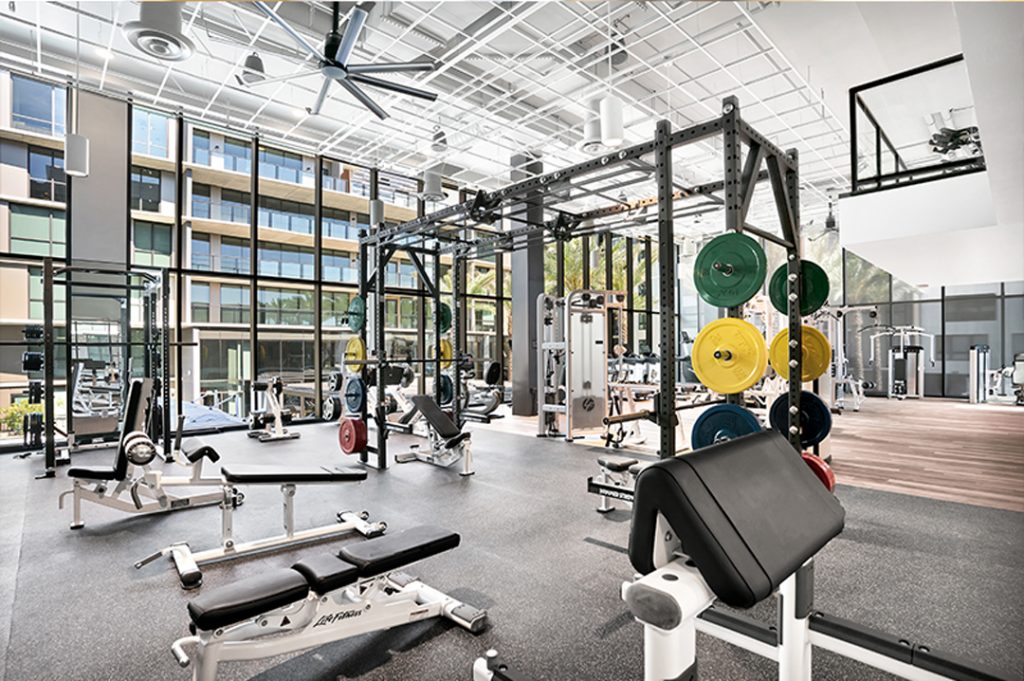
For multi-family communities, the challenge is two-fold and new, creative solutions are emerging that both follow and support “safer at home” recommendations while making public spaces safer to share. How are leading communities keeping residents engaged and socially connected (building and supporting the true essence of community when we need it most), while ensuring safe distancing and sanitization standards? A creative combination of shared virtual programming, controlled access to centralized fitness centers and innovative distributed options are a good start.
Common COVID-Induced Changes
As soon as COVID closures began happening this spring, “seemingly overnight, thousands of residents at buildings across the country were streaming fitness classes from the comfort of their own homes. Since then, the industry has seen even more innovative approaches take hold to keep residents engaged.” Virtual fitness platforms like Wellbeats have become sought-after standards in multi-family environments, as properties are resourcefully extending their programming and equipment options beyond the walls of the central fitness center.
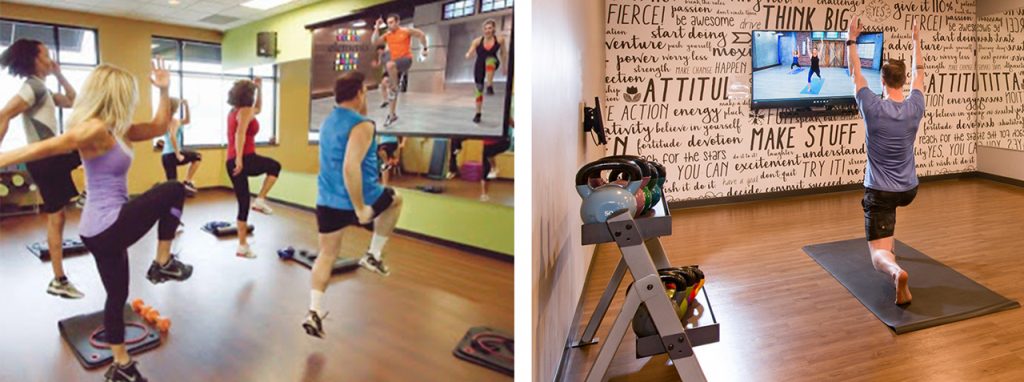
With many residents reluctant to spend as much time in public spaces as they used to, splitting the fitness focus between a central fitness center hub and in-home options is becoming a community norm. Advantageous, community-wide purchase programs for fitness equipment, massage chairs and active recreation options are being engineered in some locations, allowing residents to enjoy access to fitness amenities individually or collectively, and preserving the properties’ competitive advantage of being able to provide community-wide fitness amenities that are in demand.
Hybrid fitness and wellness models that combine individual sensitivities with group connection activities (that are so vital to fostering community when we need it the most) are flourishing, as properties pivot around ongoing COVID concerns.
Thinking Outside the Box
To stay ahead of the pack, when all the rules have changed, you need to think on your feet and get creative.
Leveraging dozens or hundreds of residential units of reach, communities are working with commercial fitness and wellness companies like Advanced Exercise to decentralize the fitness center concept, creating a hybrid model where socially-spaced equipment and experiences are available wherever the user wants. Residents can continue to utilize and enjoy a restructured fitness center, plus they can have augmented in-home options that are secured through the property’s commercial connections.

“We’ve worked with some innovative properties on options for interactive in-room equipment that can be community-wide, distributed options like The Mirror or Echelon’s Connect Bike,” mentioned Bruce Schlagel, vice president of sales for Advanced Exercise. “With our help, properties can extend their fitness amenities to include in-room fitness and wellness options that can be packaged as premium in-room upgrades that they can charge more for. Fitness centers are the hub of many community connections, but not everyone is comfortable jumping back into shared public spaces so we’re working with multi-family communities on hybrid experiences that prioritize health and fitness, both individually and communally.”
Industry pundits agree that, “with a strong emphasis on safety and cleanliness, common-area spaces are likely to change.” That might seem like stating the obvious at this point, but many properties are still holding out hope for a “return to normal”, meaning a pre-COVID environment.
Safety precautions that are expected to linger for at least the next year make that hope unrealistic. Starting with spacing considerations, many leading properties with fitness facilities have reorganized to create individual workout spaces and schedules that put safety first. Beyond alternating equipment usage, creating “by appointment only” schedules and sanitizing between users in the fitness center, hybrid individualized fitness options are emerging as many residents remain cautious around public space-sharing.
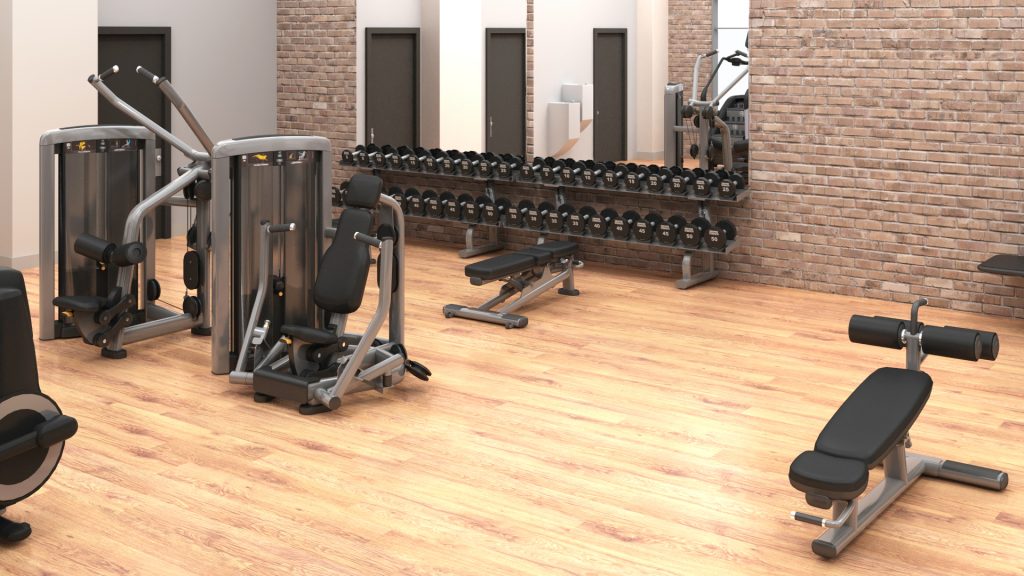
“The industry’s road forward will not begin and end with the embrace of virtual programming” as predictions are beginning to emerge that “a hybrid approach of virtual amenities and safe, socially distanced in-person experiences will become widely adopted.”
Not knowing how long it may take for individual confidence and comfort levels to return, industry experts expect that “a large share of the audience for fitness classes and other amenities may decide that they are ultimately more comfortable forgoing in-person activities in favor of virtual ones. Thriving communities are likely to need flexible or hybrid offerings that will allow for social distancing, catering to a widening range of comfort levels and capacity issues.”
Necessity is the Mother of Invention
Strains on capacity due to social distancing have necessitated a creative resurgence in the use of unconventional spaces for fitness and recreation. Facilities with larger quantities of equipment have the option of re-purposing under-utilized spaces (i.e. wide hallways, corners of lounge spaces, rooftops, or even yet-to-be-leased units that can act as personalized workout rooms) and dividing some of the fitness assets into smaller groupings across the property so that everything isn’t in one, centralized area.
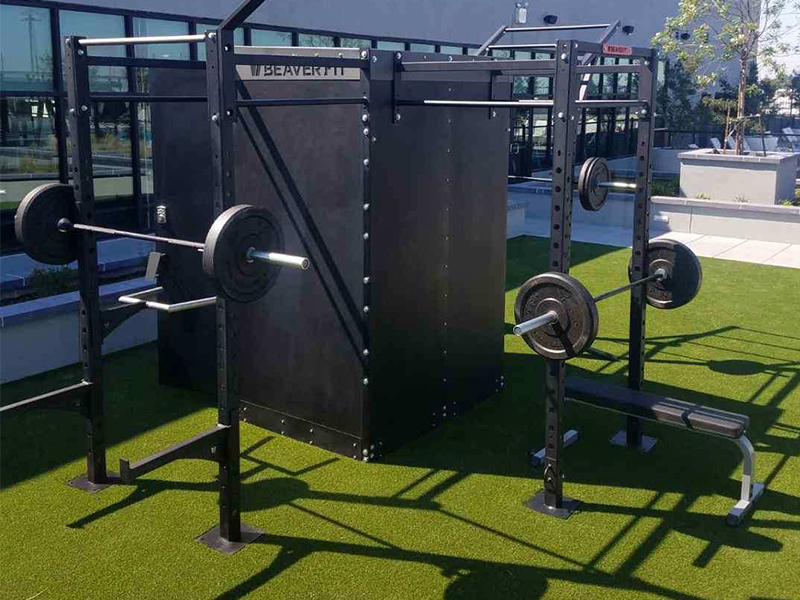
Outdoor spaces are becoming the new location for all-weather fitness equipment, where maintaining social distance isn’t as challenging as it might be indoors. In some cases, we’re seeing tents go up to create smaller, group activity spaces.
Planning Ahead
It’s hard to believe that it’s budget season already for 2021, which can be a scary proposition during this time of uncertainty. This year, annual budgets had to be scrubbed completely by the end of March and trying to forecast increasing changes in the business is a daunting task. New technology priorities require unplanned investment, and cleaning and maintenance budgets have to be completely rethought.
Keeping environments clean and germ-free isn’t just an ongoing operational challenge, it’s a budgetary one as well. More individualized spaces means more places to sanitize. Anti-microbial flooring is finding its way into an increasing number of facilities who want to keep germ transmission to a minimum. Temp check devices and ready access to anti-bacterial wipes are evident tools to help keep each individual user as safe as possible in public spaces. In most locations, these items weren’t on the budgeting radar screen until three months ago.
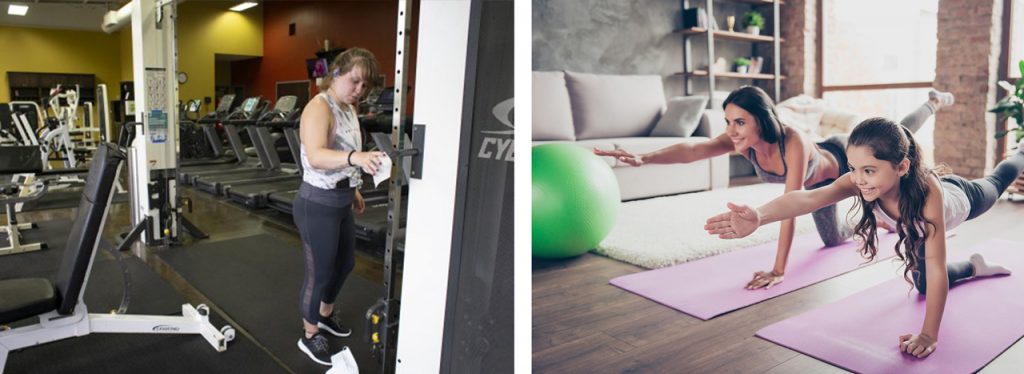
Knowing that community fitness amenities are still a key competitive differentiator, and with new virtual-inclusive hybrid models to consider alongside cleanliness protocols and space limitations, the fitness design experts at Advanced Exercise are collaborating with clients all over the country to evolve community fitness options that will only grow in value in 2021.
Finding the Balance
Staying connected is such a core value for communities, and that includes both physical and virtual options for those shared activities and experiences that communities’ value, including fitness. Those who have become adept at group ZOOM discussions and virtual events are starting to sprinkle in-person options back into the mix – though a hybrid mix of both seems to be here to stay.
A variety of imaginative solutions have emerged from communities who are continuing to strengthen bonds during 2020’s tumult, creating a healthy balance between shared-space communal safety and individual preferences. Arguably, there’s no greater time to put an emphasis on fitness with the immunity boosting, physical and mental benefits that we all know come along with it. The challenge in keeping fitness priorities and access high while keeping public safety concerns (and virus transmission rates) low, is generating imaginative new ideas that reinforce community health on multiple levels. Thinking out of the box, leveraging relationships, and establishing inclusive hybrid models, communities are demonstrating their commitment to individual health and wellness while keeping community spirits up and residents confident in their choice of where and how to live.
About Advanced Exercise
Founded in 1986, Advanced Exercise is a leading fitness equipment and facility design resource, combining more than 30 years of design expertise with access to top fitness, wellness and recreation equipment brands to help clients create fitness experiences specific to the needs of their distinct communities. Advanced Exercise fitness consultants work with clients to maximize the use of available space in any facility, sourcing the best new or used equipment solutions for diverse ranges of fitness amenity end users. For more information on fitness equipment and facility design services, visit www.advancedexercise.com or call 800-520-1112 to connect with one of Advanced Exercise’s experts.



